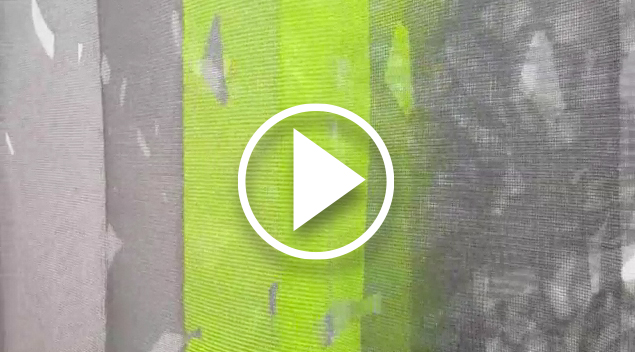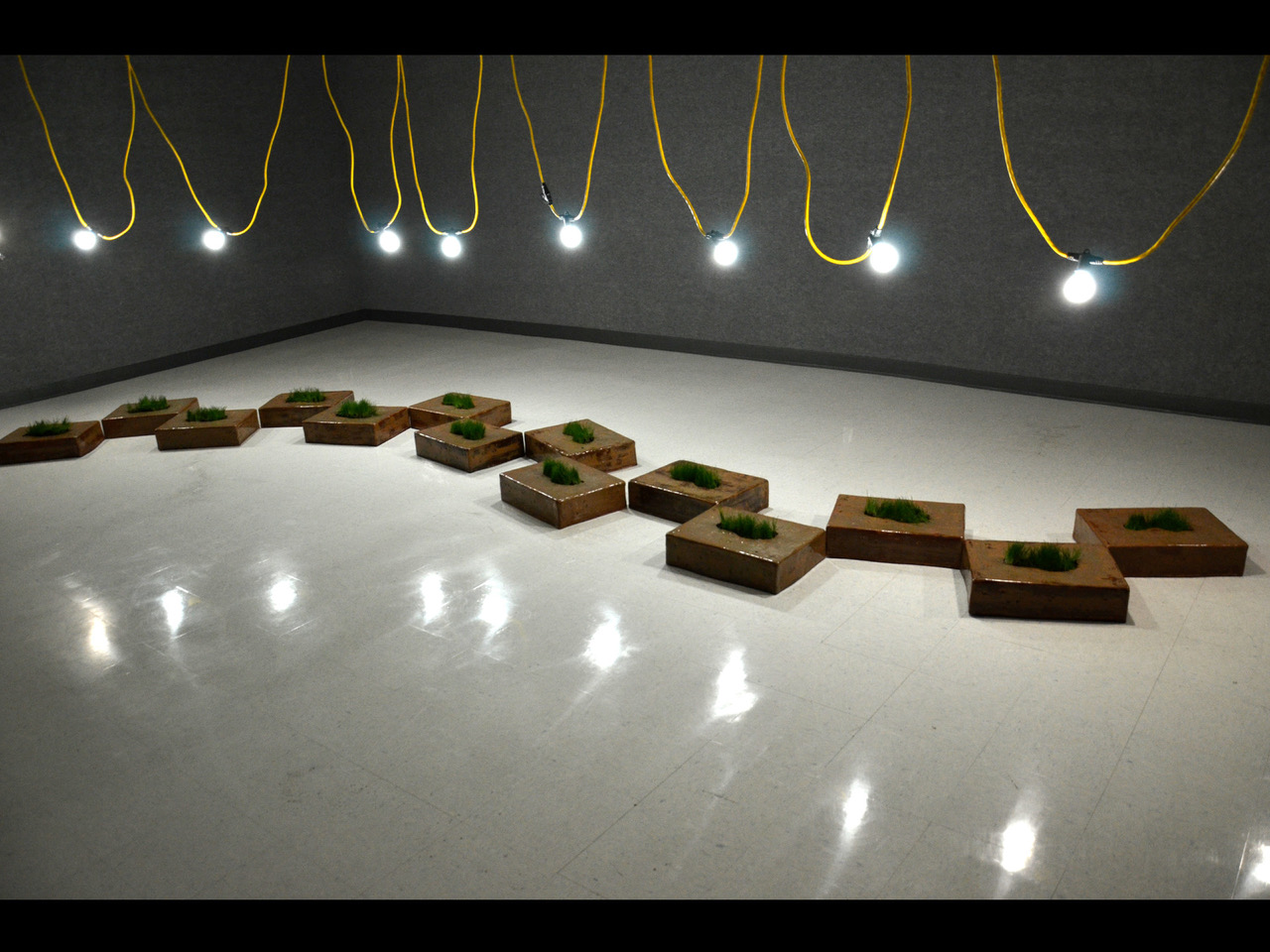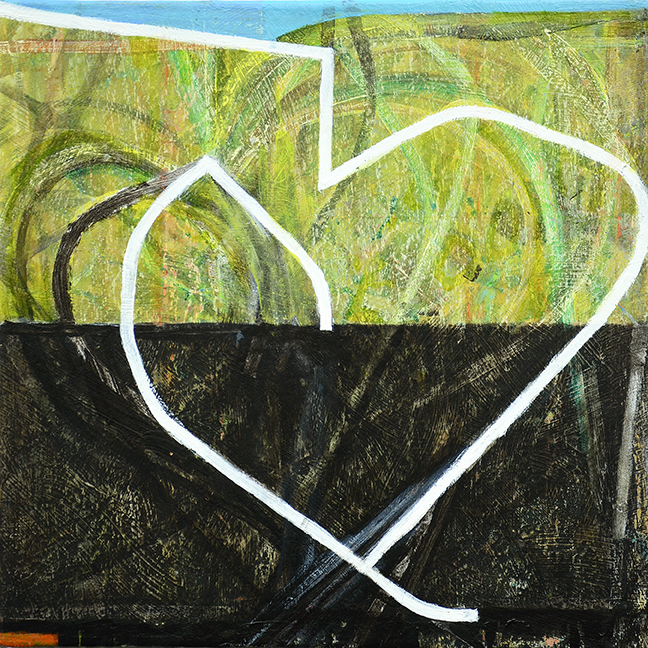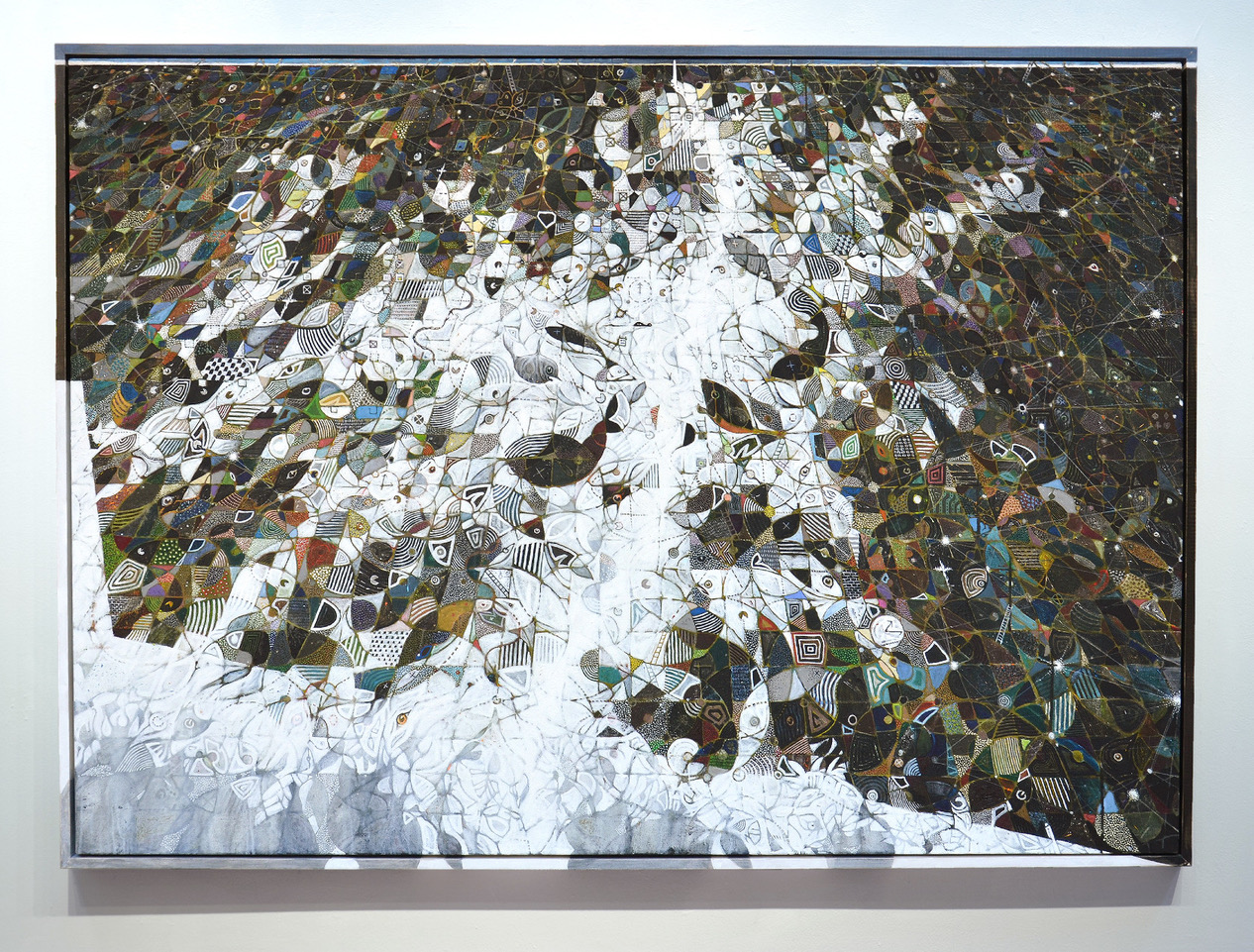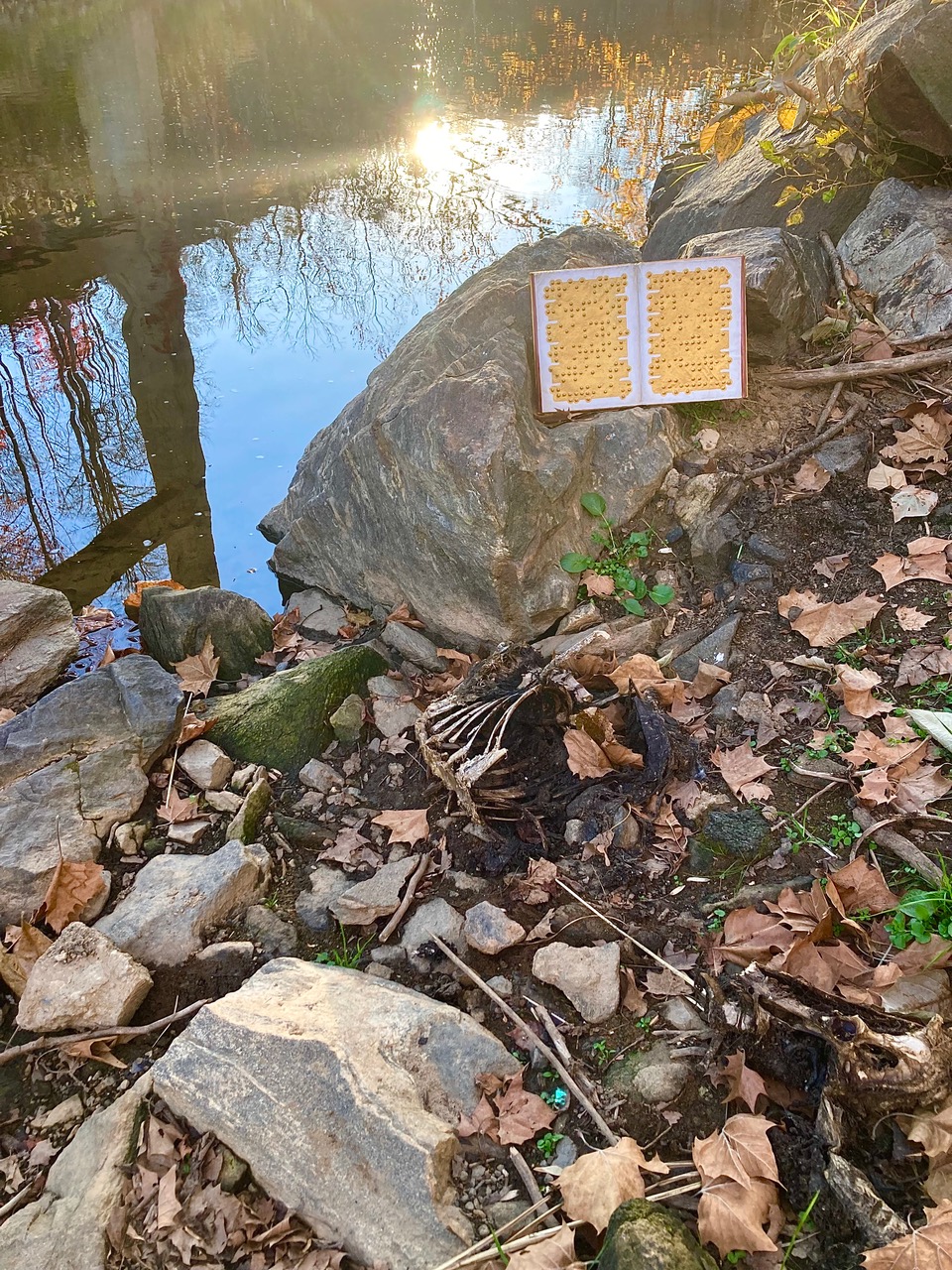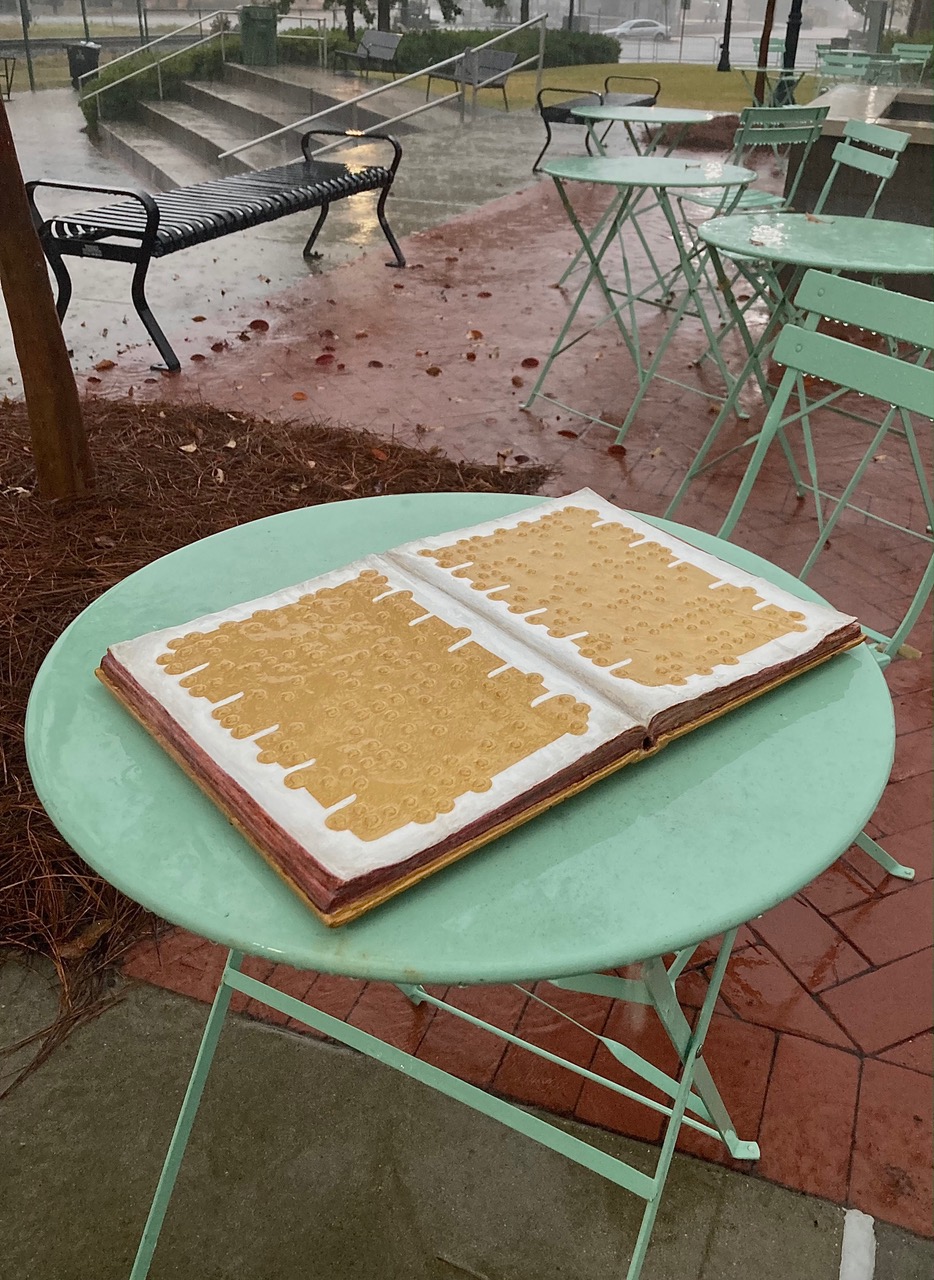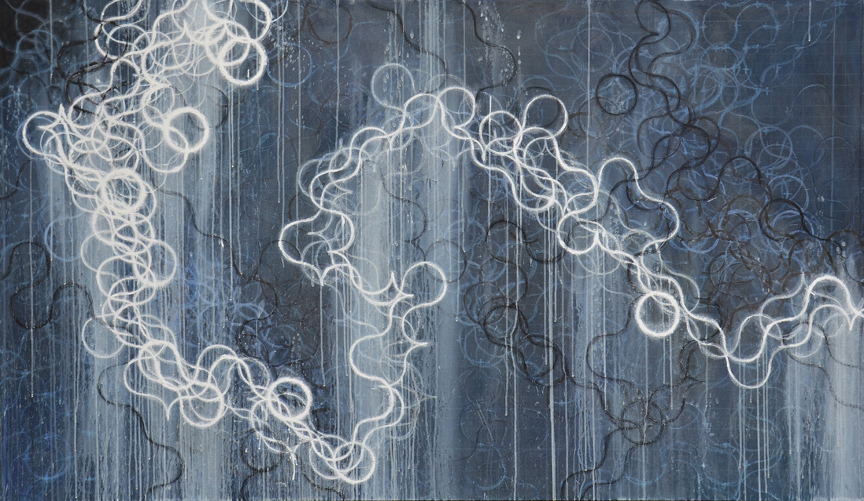Kenn was asked to lecture to faculty and students while visiting Louisiana Tech University for his solo show, “the deepest soundings” this past October. Much like in his work, setting parameters for talks helps him create continuity among his diverse body of work. His talk, entitle “P = Practice, Process, Philosophy” opened up a bit of a Pandora’s Box, if you will.
CONVERSATION.15
K: As I was thinking about practice, process and philosophy, I realized those were three “p” words. So then paint, pencil, paper, pentimenti, pedagogy, professors, pupils, … I went to the dictionary and found there are so many “p” words that are relevant to our artistic process.
I kept thinking of these alliterations. It’s very forced, but it also makes you stop and think about semantics. Often I find myself comfortable within a limited vocabulary. Sometimes I wonder if with age, my vocabulary has shrunk. I know it has to a degree. When I think of graduate school we swam within our work. We swam within talking to our peers about our work. Now, I’m by myself the majority of the time.
A painter paints a painting putatively perfecting practice and process with paint postulating a particular personal perspective populating a panel pushing pulling piling on the pigment positing a pretty picture.
That made my head hurt when I was putting that all together. I found that it’s almost as similar to my creative practice, working within parameters, within a grid, a structure.
Professors program pedagogical principles preparing pupils for professional practice. Prolific production pointing toward public patronage and purchasing and profit.
This is interesting because it’s the opposite of what we’ve been talking about in Conversation 14 (the iM365 project). That has parameters, but what happens during the 365 seconds, the changing setting each day – it has this completely wide open feeling. Whereas here it has specific parameters with only choosing “p” words, but the meaning behind each word (Profit, Production, Process, …) has a more constrained feel because we have tied definitions to each of the words.
PHILOSOPHY
K: I consider every person who is serious about a creative process is a philosopher. When we create something, we are spending our time, we are spending money to create a product. Time and money are items of value. And when we start thinking of value, we are beginning to think philosophically. We first must define what type of value, and then we must define our own value. That becomes very existential. That opens up a whole new area.
Aesthetics is a branch of philosophy. What is beautiful? What is acceptable? Aesthetics is also about surface, about a sudden appearance of an image. Do we accept it as it is, or do we go below the surface to understand it contextually within this cultural context? So aesthetics is not just about being pretty, it’s about how we value that surface or appearance of something.
green stripe
close-up video
PROFESSORS
K: I think it all really begins under the umbrella of pedagogy. If you are a student, or went through an art program, pedagogy is about the science of teaching. Professors who teach the pupils pedagogical principles to hopefully be a professional painter. What are we gleaning from those men and women who are up there pointing us in a multitude of directions? How much are you the student asking of that professor? Are you holding their feet to the fire and questioning them? Remember, this professor is in academia. There’s this whole “publish or peril” component. Most schools require you to maintain your profession outside of academia.
So I addressed the students in the room and said, “Ask them the tough questions. Ask to see their work. Ask them where they sell their work. Ask them how much they sell it for.” And the students looked around the room uncomfortably for a minute. For me, as a former professor, I considered myself an artist first and a teacher second. I brought my practice into my pedagogy, pretty much every day. I used my experiences and my knowledge to anecdotally explain something in a deeper way.
I can imagine hearing about your experience could be very valuable for the students.
K: Absolutely. I think it resonated with many of the students. And I think it is a vital part of teaching. Because I am a working artist, I know what it’s like to form relationships with gallerists, to have those conversations with patrons and collectors. I know what it’s like for a project to fall apart, and I know what it’s like for one to succeed. I know how much money and time it takes. To me, that is missing pedagogically today.
PERAMBULATE
… to walk or travel through or around a place or area, especially for pleasure and in a leisurely way.
viaticus
2011, ceramic, dirt & grass, 5x20x14 each box
piano for one hand
2005, oil on canvas, 40×48 inches, Collection Dean & Larkin Norton
PURPOSE
K: Now, it is important to convey that the artistic life is not just about making money. It’s not about becoming the richest person in the world. The richness comes from one’s practice, the wealth of the intellect, the aesthetics. That’s the part I love talking about. If you like doing it and you can make enough money, more than likely, you’re happier than most people in this world.
PAYSAGE
K: One thing I talked about was overall, I consider myself as a landscape painter. I look at most of my work and see that it has a landscape quality to it. The french word for landscape is paysage. This word appears in many of the titles for my work. Even if a piece does not look like a landscape, it has the embodiment of it.
PRODUCT
K: Not necessarily as a consumer product, but we artists are producing a quasi-product. And then, we assign a value to it.
PRICE
K: This is one of the hardest areas for any artist – at any stage of their career. It’s very difficult to place a dollar value to your work. I’m not sure what the psychology is behind that. Perhaps it is because we’ve been so gleaned to swimming in the waters of theory, context, content and concept.
Is it subjective in the art world? I would assume it might operate like the fashion industry where the value placed is so subjective, there’s not a universal standard.
K: There is no universal standard, no. It isn’t like say, petroleum. Even that as a commodity changes per region depending on availability, taxes and so on. But in general, it has a universal value per barrel.
Right. How do you measure subjective value?
K: Usually, it’s just supply and demand.
In fashion, there are drivers in that industry that dictate the next wave. But there is buy-in from the consumer. Is that the same in the art world where some people’s careers can just take off. Why?
K: To your point, you can be the most talented, the best artist you could possibly think of and that doesn’t necessarily equate to ever selling any work in your lifetime.
PATRONAGE
K: If you go through the history of art before the modern era, the patrons were the church and the nobility. That changed when individuals began to amass wealth. There are still certain patrons – well known individual collectors – that have incredible collections of artwork. And then work is acquired, of course, through museums and corporations. But every artist to a certain degree is looking for that type of patronage because it affords them the ability to create their work and live solely off their artwork. This is one of the hardest things to do these days and unfortunately, only 25% of all art graduates actually work within the arts profession. The numbers are pretty dismal. They’re pretty poor. {both laugh} So when you are thinking about patronage, purchasing and pricing, you have to think about principles.
PRINCIPLES
K: When we speak of principles the first are those of design: focal point, unity, composition, and so on. But, one’s own principles – those will come into play when you establish relationships with dealers and galleries. For example, you have a painting for sale at a gallery priced at $5,000 and a possible collector offers $3,000. Will you stick to your principle of not selling yourself short, or do you need to put food on the table?
Another incident where principles arose (this is a true story), was with a consultant in Los Angeles. They had purchased the rights to three of my images for print to go into a hotel. A few weeks later they emailed me proofs. I’m looking at these works and I see the curved circulinear lines but the colors were completely off, and she wanted me to okay this to go into production. I realized that the interior designer had changed the color. I sat with this for a day, called her the following day, and told her “Those aren’t mine. You changed the color.” And she said, “Well we had to,” and I said, “No.”
She was quite angry. In no uncertain terms explained that if I didn’t approve this, I would never work with that client again. So my principles of not needing the money to have someone else alter the artwork when that was not part of the initial conversation stayed in tact. So, I told her “no” and backed out of the deal.
A few weeks later, I received an email from the client asking why I had pulled out of the project. I gave the client my understanding of it. Not only did we end up pursuing that, they commissioned me for another piece. So by holding onto my principles of what I considered “right” verses “wrong,” I came out ahead.
Sometimes a gallerist might want to hang a piece of artwork in a different orientation than originally intended just to make a sale. I would say “no.” This tells me that you do not value my work the same as I do. I have actually severed ties with galleries that have tried to do that. That to me is selling out.
POLITICS
K: This leads to the politics of dealing with people in one’s own practice.
PAREIDOLIA
K: The tendency to perceive a specific, meaningless image in a random pattern. At one time, this was considered part of a psychosis because you were imagining things. Apophenia is the term associated with the psychosis and also where people with conspiracy theories also find themselves. So, it’s walking a fine line.
overtopping
2019, mixed media on canvas & wood, 62×86 inches
K: But I know what I’m doing visually. I am allowing those images in the materials of my own painting. I am enjoying that process. I like that intuitive process. I get lost in it. It’s interesting to look back at the details in my work and sometimes, I have no recollection of how I got there. This work really puts you in the present. When I’m painting like this, I am not thinking about the past or the future. I’m in that right-brained state and I don’t remember anything.
You are experiencing flow.
K: Yes. It’s only taken me 60 years to get here, but I’ll take it.
PAINTING, PAINT, PAINTER, PASTELS, PENCIL, …
K: So many different words. Like the iM365: public art, pop-up. I get to now create my own gallery space with iM365. I pop-up in public places, or pop-up in private ones. I get to be that discerning voice when the work the shown, when it isn’t, and where it is shown. And I like that. And now, I have to figure out how to profit from it.
iM365.036.nc.foi
Forks of Ivy, NC
iM365.038.la.rstn
Ruston, LA
iM365.039.ms.jksn
Jackson, MS
PROFIT
K: When it comes to artwork, I think I still struggle with the word profit. Because of my past, profiting off one’s work had a stigma associated with it. But when you look at the accounting component of it, even if I receive “x” amount of dollars for it, that’s not pure profit. You have include the cost of all the materials that went into it, electricity, rent, gasoline, etc. All of those factors play into the cost of creating it, so the profit margin of that is maybe 25% of “x.”
I think would you say, we can’t help but see art as “holy.” Art has a purity as far as its expression. Pricelessness. How do you put a price on a sacred experience, if that’s what we’re labeling it. So, profit kind of sounds like (at least in this capitalistic society) there’s a “taking advantage of.”
K: Amateurs await for some sign to produce artwork. They are waiting to be inspired. The rest of us get up, put on our pants and shoes and go to work. Art is a job. But, the word “job” is loaded. The word “capitalism” is loaded. Oftentimes it is loaded against the creative endeavor because that is suppose to be sacred. But, who made it sacred?
To me, it’s just kind of magic. It can be healing.
K: But it isn’t magic. It’s just putting pigment on a panel.
shaconage
2012, mixed media on canvas, 48×84 inches, Collection of Biogen Idec, Raleigh, NC
PERCEPTION. PERSPECTIVE. PRESENCE.
K: To me it’s interesting. How we are dealing with this semantic word play is similar to mark-making. A person may draw a timid line. Another may make this really harsh aggressive stroke. Words can have those loaded perceptions as well.
I am just beginning this exploration. I am interested in diving down deeper because it truly does alter my own synapses language-wise and also it’s also my own language when I am altering a painting. It’s as if my vocabulary is shifting again, and so too, is the content.
So much of my work is system-based. Whether it’s with Braille, or exploring structure and shapes – it is deeply rooted in language.
I have found when I am truly at a seriousness with my practice in my studio, I can’t play music anymore. There is so much bouncing around in my head language-wise. Thoughts.
It’s because learning is happening. You are focussed and not interested in merely distracting or entertaining yourself. I perceive that there is an expansiveness with what you are doing. Words may come in, or drop off, but you are letting all of that express itself. Right?
K: You use the word expression, and in a way that word is viable. I see that it’s not expressing, it’s connecting. There’s also a physical connection: eye-hand coordination. Extended cognition. Scientists have studied spiders who use their spider web as extended cognition to help them trap their food. If something gets caught in the web, the web vibrates and tells the spider something is there. I think a paint brush can be a tool for extended cognition. I think phones, Google, the Cloud, etc. allow us to forget certain types of information because that other entity will remember that for us. But within painting, that can’t happen. We have to be present. We have to be in that particular moment for that to work.
PROMPT
It sounds like this lecture with these words, served as a prompt for the students. It was a jumping point off of which they can explore.
K: I would hope so. I spoke for about an hour, and then we had some questions and answers. Typically in a Q&A you might get a few questions. It got to the point where after 45 minutes into the Q&A, the woman moderating this, she said I would love to continue on, but some people have to get going. And there were some really great questions. Three students stayed after to ask even more questions. It truly did prompt them to want to know more.
For the first time I walked away feeling like I had done my homework well enough. Faculty members even came up to me and told me how much they enjoyed the talk, and they had questions. It’s as if I hit a point that is worth mining even further. And, perhaps I will even formalize these thoughts and write a paper about my process. The potential and the possibilities are almost endless.

